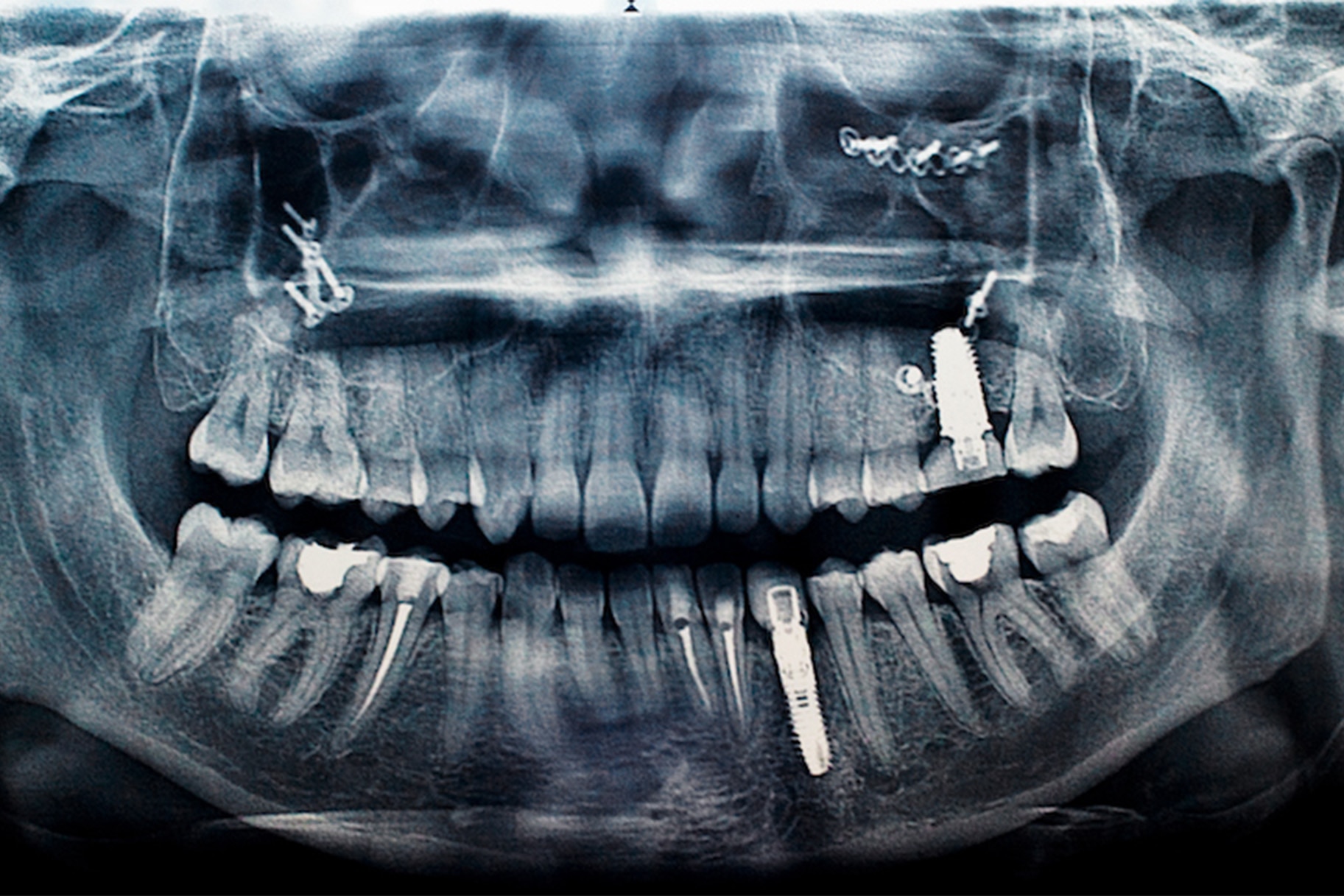Create a free profile to get unlimited access to exclusive videos, sweepstakes, and more!
The future of hearing aids might be inside your mouth
No word on if you can hear yourself grinding teeth in Dolby surround sound.

In 2001, Brad Pitt and Robert Redford starred in the action thriller Spy Game, continuing a long tradition of moviegoers enjoying the exploits of secret agents working behind the curtain of the world. In film and television, your James Bond types live their lives in society’s unseen underbelly, reliant on specialized skills and even more specialized technology. They use pens that are really guns, secret codes, smoke bombs, and communications systems hidden in their teeth to slip into places undetected, gather information, and get out without anyone being the wiser.
Most of us will never get our hands on the sorts of secret spy gadgets cooked up in the world’s various skunkworks, but we might be able to get our mouths around a hidden communications device of our very own. Scientists from the Department of Prosthodontics at Tongji University in Shanghai have crafted a new device capable of transmitting sound through the jawbone which could replace conventional hearing aids in the future. Their findings were published in The Journal of the Acoustical Society of America.
The idea of putting hearing aids inside the mouth isn’t precisely new. Similar technologies have existed for more than a decade, but they’ve never been as streamlined or as effective as this. And they’ve always been an addition to an already crowded part of the body, rather than a seamless replacement.
Previous in-mouth hearing aids have attached to the molars and utilized bone conduction to transmit sound waves through the jawbone to the mastoid bone at the back of the ear. Essentially, vibrating your teeth leads to a vibrating jaw and a vibrating inner ear, which carries sound signals to the brain.
The overall mechanism behind sound transmission through the jawbone hasn’t change, but this new work seeks to improve upon those previous devices to make something even more discreet and comfortable for the wearer, as well as something which works better. Researchers have succeeded in doing so by creating a bone conduction device which resides inside an implanted false tooth.
Experiments on 38 participants with hearing loss and a dental implant confirmed the effectiveness of the hearing aid implant. It also helped to define the optimal placement inside the mouth. Researchers applied sound waves to tooth implants, natural teeth, and directly to the mastoid bone and measured the sound transmission of each. They found that the implants worked at least as well at carrying sound waves as natural teeth or the mastoid bone. In some cases, they worked even better.
Perhaps counterintuitively, they also found that teeth located toward the front of the mouth worked a little better than those at the back. One might expect that being nearer to the ear would be a benefit but that wasn’t the case, probably owing to differences in hardness of the jawbone at those places. Denser or more rigid bone carries the sound waves more readily than softer or less dense bone.
In the future, those with hearing loss might be able to cast aside their ear-mounted hearing aids in favor of one which is tucked away inside the mouth. We’ll likely still need a wireless microphone mounted somewhere near the ear though, both so the sound doesn’t have to get inside of your mouth to be transmitted and also to maintain directional accuracy.


























